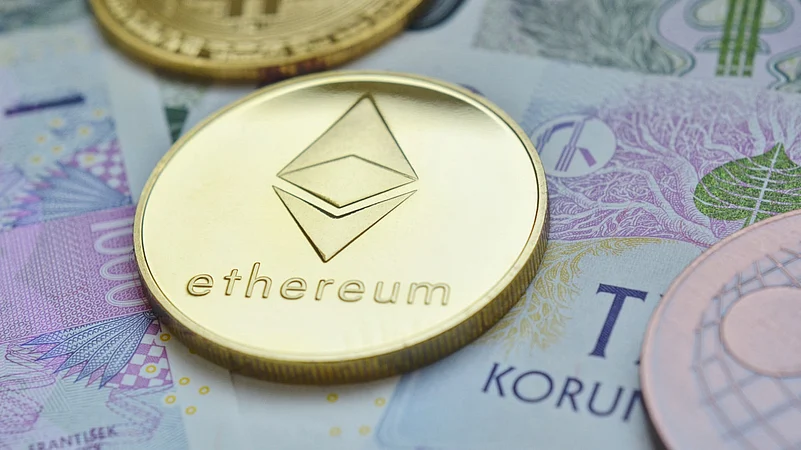The Ethereum (ETH) Blockchain has successfully merged as of 12:16 hrs Indian Standard Time (IST), and the same was confirmed by Ethereum’s co-founder Vitalik Buterin on Twitter.
“And we finalised! Happy merge, all. This is a big moment for the Ethereum ecosystem,” Buterin said in his Tweet.
Buterin said in a Tweet post, "So far, the percentage of full blocks has dropped from 20 per cent to 10 per cent."
According to Sumit Ghosh, CEO and co-founder, Chingari, a social crypto application, "The transition to proof of stake have resulted in blocks being created around 10 per cent more often than they are under proof of work. After merge, it is now projected that a new block will be formed every 12 seconds, resulting in transactions being validated more quickly."
Hence if transactions get validated more quickly, the reward granted for that will be disbursed quickly to the validator participant nodes.
What Has Changed With ETH Staking?
The newly-‘Merged’ ETH Blockchain requires each participant to stake a minimum of 32 ETH in order to be eligible for staking rewards and interest. The interest rate for staking varies according to the Blockchain’s activities, and as of September 15, 2022, resides at 7 per cent annual percentage yield (APY).
After the ‘Merge ’, Ethereum has transitioned into the proof-of-stake stage, which means if you want to validate a transaction on the Blockchain and receive rewards, you need to have sufficient ETH (minimum 32), and then pledge it so as to become eligible for the transaction. There is no other alternative to this, as of now.
The price of ETH as of September 15, 2022 was $1,623.22 at 1 pm. So, if you want to earn staking rewards on ETH, you need to buy and hold about $51,000 or about Rs 42 lakh worth of ETH.
"The transaction speed and cost will remain the same. The consensus mechanism has changed from Proof of work to Proof of stake but the reward allocation to the validators remains the same. 32 ETH will be required to become a validator in the ETH network. But a user with lesser Ethereum can use institutional staking services as well to get the benefits of staking," said Amanjot Malhotra, country head, Bitay India, the Indian subsidiary of Turkish crypto exchange Bitay.
How Can You Stake ETH?
There are four ways in which you can stake ETH:
1] Solo At Home Staking
2] Using Staking As A Service Software
3] Pooled Staking, and
4] Centralised Exchange Staking
What Does Staking Ethereum (ETH) Mean In Indian Context?
Indian Ethereum users have been left in the lurch now, as about Rs 42 lakh worth of Ethereum (32 ETH) needs to be staked in order to be eligible for staking rewards and interest.
Says Vijay Pravin Maharajan, founder and CEO of bitsCrunch, a German Blockchain analytics firm: “You could get returns varying about 4-7 per cent on your tokens, if you choose to stake Ethereum on an exchange at this time. The Merge has created a lot of engagement with Ethereum tokens.”
“However, it is important to remember that staking these tokens can lock them out of use until the shift to Ethereum 2.0 is complete,” adds Maharajan.
The Ethereum 2.0 shift is expected to be completed by the first half of 2023, but no tentative date is given as of now.
What Alternative Do Indian Users Have?
Centralised crypto exchanges, such as Binance, Kraken, Coinbase, CoinDCX, and others came out with a plan about earning Ethereum staking rewards post the Ethereum ‘Merge’.
Binance’s solution is called BETH, and what it does is take up your ETH and issue you with the BETH token in a 1:1 ratio. Binance said in a press release that the minimum amount for Ethereum staking is 0.001 ETH, which is about Rs 127.
“Binance tokenises BETH for users that represent your staked ETH on a 1:1 basis, to keep using your locked assets for trading and withdrawals. You can change BETH back to ETH when ETH 2.0 phase one goes live, then you will receive the amount of Ethereum equal to your current BETH holdings,” Binance said in an FAQ post.
CoinDCX’s solution uses a pooled staking method. CoinDCX has created a new ETH-backed bond token called LQTH (Liqueth) based on proof-of-staking reserve protocol, which means that the tokens will be generated in a 1:1 ratio of the Ethereum staked through the validator.
Minal Thukral, executive vice-president, growth and strategy, CoinDCX, said, "Users can directly buy Liqueth on the CoinDCX platform in the LQTH/USDT chain. The value-addition it provides is that one doesn't need to have 32 ETH to stake in ETH. Users can stake min 0.1 ETH and the LQTH will get converted to ETH post 2.0 along with the rewards. Current rate is around 4.5 per cent."
What Are Ethereum Developers Saying Regarding This High Cost Of Staking?
Micah Zoltu, core developer, Ethereum Blockchain, has advised people not to stake their ETH with crypto exchanges. In an interview with media website Decrypt, he said, “You should not stake with an exchange. It hurts the network rather than help it, and the return on investment at the moment probably isn’t worth it.”
He advises people to do-it-themselves by using a computer to run an Ethereum node which requires a good Internet connection, electricity and a sufficiently good computer.
Zoltu further said that giving away people’s ETH to exchanges for staking rewards means giving up control to someone else, “who may decide to attack with that stake.”














